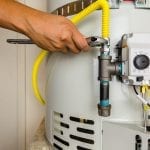Effective Techniques for Maintaining Your Home's Hot Water SystemSimple Steps to Maintaining Your Home's Hot Water SystemCaring for Your Home's Hot Water System: Important Tips
Effective Techniques for Maintaining Your Home's Hot Water SystemSimple Steps to Maintaining Your Home's Hot Water SystemCaring for Your Home's Hot Water System: Important Tips
Blog Article
What're your opinions about Tips on Maintaining a Water Heater?

Warm water is essential for daily comfort, whether it's for a refreshing shower or cleaning recipes. To guarantee your warm water system runs successfully and lasts longer, regular maintenance is crucial. This write-up provides useful pointers and insights on how to maintain your home's hot water system to prevent disturbances and expensive repair work.
Intro
Preserving your home's warm water system may appear difficult, however with a few straightforward actions, you can guarantee it operates smoothly for several years to come. This overview covers every little thing from recognizing your warm water system to DIY maintenance tips and recognizing when to employ professional help.
Significance of Maintaining Your Warm Water System
Normal upkeep not only extends the life-span of your hot water system but additionally guarantees it operates efficiently. Disregarding upkeep can result in decreased efficiency, greater energy costs, and also premature failure of the system.
Indicators Your Hot Water System Demands Upkeep
Knowing when your hot water system needs focus can stop major concerns. Watch out for indicators such as irregular water temperature level, strange noises from the heating system, or rusty water.
Recognizing Your Warm Water System
Before diving right into maintenance jobs, it's practical to understand the fundamental components of your warm water system. Usually, this consists of the water heater itself, pipelines, anode rods, and temperature level controls.
Monthly Upkeep Tasks
Regular month-to-month checks can assist capture minor issues before they rise.
Flushing the Water Heater
Purging your water heater eliminates sediment accumulation, improving effectiveness and prolonging its life.
Monitoring and Changing Anode Rods
Anode rods prevent rust inside the tank. Checking and replacing them when worn is critical.
Inspecting and Changing Temperature Level Settings
Changing the temperature level settings makes sure optimal performance and safety and security.
DIY Tips for Upkeep
You can do numerous maintenance tasks yourself to maintain your warm water system in top problem.
Looking for Leaks
Consistently evaluate pipes and links for leakages, as these can lead to water damage and greater bills.
Testing Stress Alleviation Valves
Testing the pressure safety valve guarantees it functions properly and prevents excessive pressure buildup.
Protecting Pipelines
Shielding hot water pipes minimizes warmth loss and can save energy.
When to Call a Professional
While DIY upkeep is advantageous, some problems call for specialist proficiency.
Complex Problems Needing Professional Help
Examples consist of significant leakages, electrical issues, or if your water heater is regularly underperforming.
Routine Specialist Upkeep Benefits
Expert maintenance can consist of complete assessments, tune-ups, and making sure compliance with safety standards.
Verdict
Normal upkeep of your home's warm water system is necessary for effectiveness, durability, and expense savings. By complying with these suggestions and understanding when to seek expert assistance, you can guarantee a reputable supply of warm water without unforeseen interruptions.
How to Maintain an Instant Hot Water Heater
Before tinkering with your hot water heater, make sure that it’s not powered on. You also have to turn off the main circuit breaker and shut off the main gas line to prevent accidents. Also turn off the water valves connected to your unit to prevent water from flowing into and out of the appliance. 2. When you’re done, you have to detach the purge valves’ caps. These look like the letter “T” and are situated on either side of the water valves. Doing so will release any pressure that has accumulated inside the valves while at the same time avoid hot water from shooting out and burning your skin. 3. When the purge valves’ caps are removed, you have to connect your hosing lines to the valves. Your unit should have come with three hoses but if it didn’t, you can purchase these things from any hardware or home repair shops. You can also get them from retail stores that sell water heating systems. Read the user’s manual and follow it to complete this task properly. When the hosing lines are connected, open the purge port’s valves. 4. You should never use harsh chemical cleaners or solutions when cleaning your unit. Make use of white vinegar instead. It should be undiluted and you’ll probably use about 2 gallons. 5. Now flush your water heater. This task should probably take about 40 minutes. We can’t give you specific directions for this because the procedure is carried out depending on the type, model and brand of your heater. With that being said, refer to the user’s manual. 6. When you’re done draining the unit, you have to turn off the purge port valves again. Remove the hosing lines that you earlier installed on each of the water valves. Put the valve caps (purge port) back in their respective places and be very careful so as not to damage the rubber discs that are found inside these caps. 7. Now that everything’s back in place, check your user’s manual again to find out how to reactivate your water heating system. 8. Once it is working, turn one of your hot water faucets on just to let air pass through the heater’s water supply pipes. Leave the tap on until water flows smoothly out of it. https://www.orrplumbing.com/blog/2014/september/how-to-maintain-an-instant-hot-water-heater/

We were shown that write-up about How to Maintain a Hot Water Heater in a Few Simple Steps from a buddy on another blog. Remember to take a moment to distribute this blog posting if you appreciated it. Thanks a lot for being here. Revisit us soon.
Call Report this page